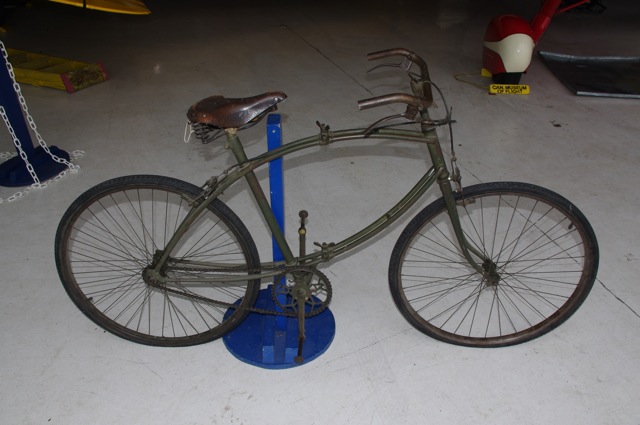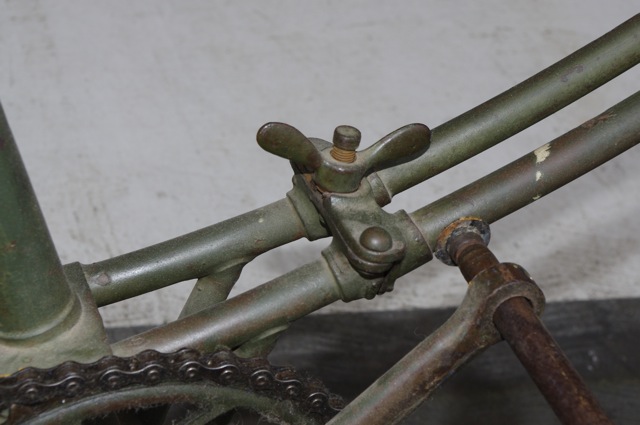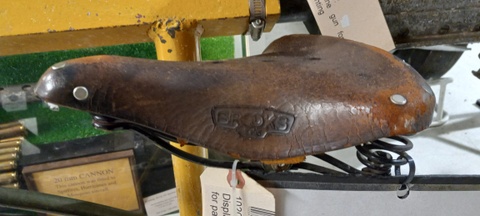
In WW2 bicycles were a cheap and light-weight method of giving mobility to infantry. This was particularly true for airborne troops, who were obviously much more limited in the size and number of vehicles that could accompany them. The British airborne forces had a unique bicycle designed to be folded in half and parachuted down. While somewhat bulky by today's standards, the bike is remarkably light. The bike could either be dropped separately or strapped to the parachutist.
Parachuting with the airborne bicycle from either Dakota or Stirling Aircraft is simple and requires little equipment. The bicycle is suspended from the parachutist’s body by a quick-release strap when jumping and is always released and lowered to the full extent of a 20 ft suspension line during descent.
Strap both wheels together, securing them to the rear chain stays to prevent them from rotating. Tie one end of the 20ft. suspension line to both the wheels in such a position that when the cycle is suspended by the line the saddle is lowermost. This is important to prevent damage to the handlebars.
Commencing from the free end, plait the suspension line to ensure that it will pay out quickly and easily without forming loose coils likely to foul the cycle. Take the free end and tie it to the lower left leg strap of the parachute harness. Finally, suspend the bicycle from a quick-release strap passing round the back of the parachutist’s neck.
When jumping from Stirling aircraft, hold the bicycle slightly forward and to the right-hand side. It is important to stand slightly to the starboard side of the aircraft centre-line to prevent the cycle from fouling the exit. As soon as the canopy has developed, release the bicycle by pulling the loose end of the quick-release strap. No anti-sear sleeve is required.

